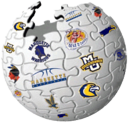Photo by Tony Walsh | Dawg Nation
It's starting to feel like the NCAA Tournament no one wants to play in. The weekend's chaos started with New Mexico losing at Air Force, dropping the Lobos to the 11-line. Then came Saturday. Penn State lost at Maryland, Kentucky lost at Georgia, Clemson lost at North Carolina, Florida lost to Vanderbilt, Wisconsin lost at Nebraska, USC lost at Oregon State, Seton Hall lost at Villanova, Oregon lost to UCLA, and Utah State lost at San Jose State.
Any of those teams could've conceivably been in the field with a win. While North Carolina won, beating Clemson at home was more a case of not hurting themselves than actually helping their resume. A Quadrant 2 home win is better than a loss, but not enough to lift the Tar Heels into the field. For weeks, I've been high on this bubble, feeling like there were more teams that I wanted to put in than I was able, but this weekend shifted that and we are back to the seemingly omnipresent soft bubble territory.
There were other teams that helped themselves. Nevada, Pittsburgh, Boise State, Oklahoma State, Mississippi State, Texas A&M, Memphis, and Arizona State picked up wins that got their heads above water. The toughest call came down to the final spot. It came down to Kentucky, North Carolina, USC, Clemson, and Wisconsin. Here are the comparative resumes, sorted by NET. Green highlights indicate the best in a category, the red indicates the worst:
A few things to consider at this point. Typically, it's hard (but not impossible) to get selected with a NET in the 70s. Second, teams usually need to be at least +4 in the overall win column to make it in. Resume-wise, teams below 52.5 average rarely get selected. Another non-obvious factor is that it's uncommon to see teams with a losing record in Quadrants 1-3 get selected.Let's analyze the resumes:
Kentucky: The NET and predictive metrics love them, but having only a single Quadrant 1 win in 8 attempts is poor. It's great that the win is at Tennessee, but doesn't stand out as much with Tennessee sliding and UCLA (USC's best win) and Marquette (Wisconsin's best win) moving up.
North Carolina: Middle of the pack in NET, Record, and computer rankings. Then you get to their Quadrant breakdowns and the only thing they have going for them is a 9-0 record against Q3 and Q4. When the best thing that can be said about you is "they didn't lose bad games" that's not a ringing endorsement. Digging deeper, their only Q1 win is over an Ohio State team that is falling faster than a Chinese spy balloon. Simply put, their resume is gross and doesn't belong in the field.
USC: This feels like an incredibly under the radar resume. NET and record are both good enough. Resume numbers are great, particularly Strength of Record (31) which seems to be a major deciding factor. Their Q1-3 total is 13-7, which is very good, and their 3 wins against the field are tied for best among this group.
Clemson: Their record is very nice, but the NET and resume average are borderline disqualifying. Having the worst predictive numbers as well, along with as many losses outside the first two quadrants as the other four teams combined pushes them over that border. Clemson is not a tournament team.
Wisconsin: I've had a really tough time knocking this team out. Their NET sucks, but their Q1 win total is similar to Rutgers last year, who got in with a 77 NET. While they don't have Rutgers' Q1A wins, they also don't have any bad losses. They're also the only team here with a winning record away from home. They also have 3 wins over the field, tied for most, and only 2 losses outside the field, tied for fewest.
This was a difficult decision. Ultimately, Clemson was eliminated because of poor computer numbers, bad losses, and nothing in terms of great wins that made you say "this team has to be in." North Carolina was eliminated because when you're pointing more to lack of losses than quality of wins, you aren't getting in. Kentucky was eliminated because while the computers like them, there just isn't enough quality beyond the Tennessee win.
That left me with USC and Wisconsin. And of course, this brought in the extra factor that Wisconsin did beat USC on a neutral court. Despite that, I went with USC. Nothing about their resume has the "borderline disqualifying" that Wisconsin's NET, overall record, and Q1+2+3 record does. As of this morning, USC makes it as the last team in while Wisconsin is the first team out.
This also creates a difficult bracketing decision. Because all of the 3-seeds are scheduled to play at sites on Friday/Sunday, one of the 11-seed play-ins had to be moved to the 12-seed line. In addition, Arizona State and USC were the last two teams in, but as they are in the same league couldn't play each other. I also hoped to avoid any of the Pac-12 teams meeting before the Elite Eight. Memphis was matched with Arizona State and sent to the 12-line in Orlando against San Diego State. That should have pushed Charleston (the 12-seed moving up) up against Illinois (the strongest 6), but that would've meant USC could meet Arizona before the Elite Eight, so Charleston went to Denver to play Miami (the second strongest 6) while the play-in game went to Illinois.
Let's look at the S-Curve and bracket:
Multibid Leagues
Big 10: 8
Big 12: 8
SEC: 7
ACC: 5
Big East: 5
Mountain West: 4
Pac-12: 4
American: 2
WCC: 2





No comments:
Post a Comment